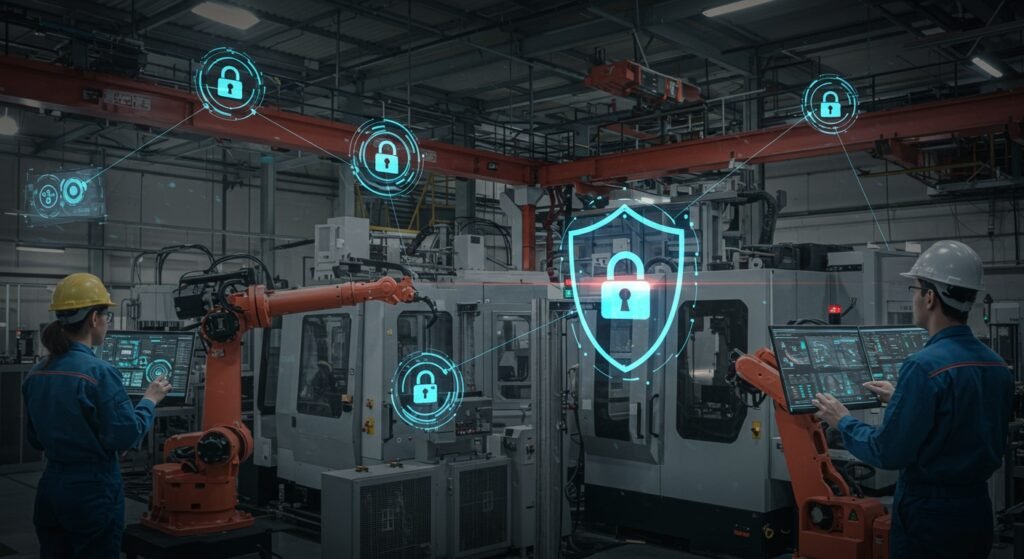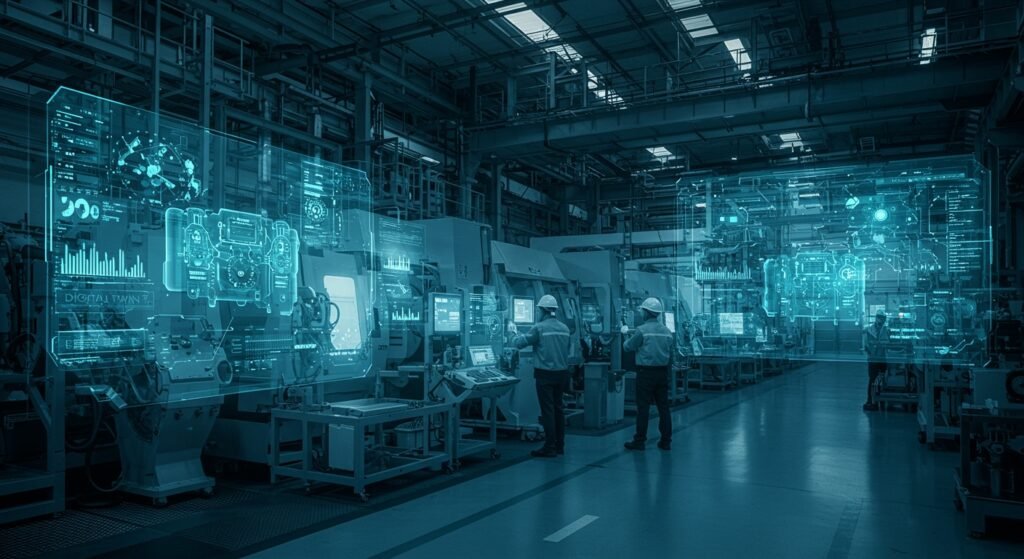In an increasingly interconnected world, the digital transformation of industrial sectors has led to the rise of ‘smart plants’ and highly automated facilities. While these advancements bring unparalleled efficiency and productivity, they also expose critical infrastructure to a new frontier of risks: cyber threats. Securing these complex environments is paramount, making robust industrial cybersecurity not just an IT concern, but a foundational requirement for operational integrity and national security. This article delves into the unique challenges of safeguarding Industrial Control Systems (ICS) and Operational Technology (OT) environments, outlining essential strategies to build resilient defenses against an ever-evolving threat landscape.
Table of Contents
- The Evolving Threat Landscape in ICS/OT
- Understanding the Unique Challenges of Industrial Cybersecurity
- Key Pillars of a Strong Industrial Cybersecurity Strategy
- Network Segmentation and Access Control
- Regular Vulnerability Assessments and Patch Management
- Employee Training and Awareness
- Implementing a Robust Industrial Cybersecurity Framework
- The Future of Smart Plant Security
The Evolving Threat Landscape in ICS/OT
Industrial Control Systems, which include SCADA (Supervisory Control and Data Acquisition), DCS (Distributed Control Systems), and PLC (Programmable Logic Controllers), are the backbone of modern industrial operations. They manage everything from power grids and water treatment plants to manufacturing lines and oil refineries. Historically, these systems were isolated, relying on air gaps for security. However, the drive for greater efficiency, remote access, and integration with enterprise IT networks has blurred these lines, creating new attack vectors for sophisticated adversaries. Nation-state actors, cybercriminals, and even insider threats now view critical infrastructure as prime targets, aiming for espionage, sabotage, or financial gain.
Understanding the Unique Challenges of Industrial Cybersecurity
Unlike traditional IT security, where data confidentiality is often the top priority, ICS/OT security places a premium on operational availability and safety. Downtime in a power plant or a chemical facility can have catastrophic real-world consequences, including environmental damage, loss of life, and economic disruption. Furthermore, many legacy OT systems were not designed with modern security protocols in mind, making patching difficult or impossible without disrupting operations. The convergence of IT and OT networks also introduces complexities, requiring specialized expertise that understands both domains.
Key Pillars of a Strong Industrial Cybersecurity Strategy
Building a robust defense requires a multi-layered approach, moving beyond simple perimeter security to encompass a comprehensive framework. Here are critical components:
Network Segmentation and Access Control
Implementing strong network segmentation is fundamental. This means physically or logically separating IT networks from OT networks and further segmenting critical control systems within the OT environment. Firewalls, VLANs, and DMZs (Demilitarized Zones) can enforce these boundaries. Alongside segmentation, strict access control policies, including the principle of least privilege, multi-factor authentication (MFA), and robust identity and access management (IAM) solutions, are crucial to ensure only authorized personnel and systems can interact with critical ICS components.
Regular Vulnerability Assessments and Patch Management
Even with segmentation, systems can have vulnerabilities. Regular assessments, including penetration testing (conducted carefully in OT environments), help identify weaknesses. Patch management in OT is often more complex than in IT due to system uptime requirements and vendor-specific compatibility issues. Organizations must develop a systematic, risk-based approach to patching, prioritizing critical vulnerabilities and testing patches thoroughly in staging environments before deployment to production.
Employee Training and Awareness
The human element remains one of the weakest links in any security chain. Comprehensive training programs for both IT and OT personnel are essential. This includes general cybersecurity awareness for all employees, specialized training for engineers and operators on secure operational practices, and incident response drills. Fostering a security-conscious culture ensures that employees recognize phishing attempts, report suspicious activities, and adhere to security protocols, significantly bolstering overall industrial cybersecurity posture.
Implementing a Robust Industrial Cybersecurity Framework
Adopting established cybersecurity frameworks provides a structured approach to managing and reducing cyber risks. Frameworks like the NIST Cybersecurity Framework (CSF) or ISA/IEC 62443 offer guidance on identifying, protecting, detecting, responding to, and recovering from cyber incidents. These frameworks help organizations develop tailored strategies that account for their specific operational context and risk appetite.
Common Industrial Cyber Threats and Solutions
| Threat Type | Description | Typical Impact | Mitigation Strategy |
|---|---|---|---|
| Ransomware | Malicious software encrypts data, demanding payment for decryption. | Operational downtime, data loss, financial loss. | Robust backups, network segmentation, endpoint protection, employee training. |
| Phishing/Social Engineering | Tricking employees into revealing credentials or clicking malicious links. | Initial access for attackers, data breaches, system compromise. | Security awareness training, email filtering, MFA. |
| Insider Threats | Malicious or negligent actions by current or former employees. | Data theft, sabotage, unauthorized access. | Strict access control, monitoring, strong offboarding procedures. |
| Supply Chain Attacks | Compromising software/hardware at vendor level to affect end-users. | Widespread system compromise, operational disruption. | Vendor risk management, software integrity checks, secure development lifecycle. |
For more detailed guidelines on establishing a strong security posture, refer to resources like the CISA Cybersecurity Best Practices.
Understanding the architecture of these systems is crucial for defense. You can learn more about understanding SCADA systems and their vulnerabilities in our related article.
The Future of Smart Plant Security
As industrial environments continue to embrace technologies like AI, IoT, and cloud computing, the landscape of industrial cybersecurity will become even more complex. Predictive analytics for threat detection, automated incident response, and AI-driven anomaly detection are emerging as critical tools. Furthermore, a collaborative approach involving governments, industry bodies, and technology providers will be essential to share threat intelligence and develop common standards. Organizations must remain agile, continuously adapting their security strategies to counter new threats and embrace innovative solutions.
In conclusion, safeguarding smart plants and industrial control systems demands a proactive, comprehensive, and continuously evolving cybersecurity strategy. By focusing on network segmentation, rigorous vulnerability management, employee empowerment, and adherence to established frameworks, industries can ensure the resilience, safety, and operational continuity of their most critical assets in the face of persistent cyber threats.


